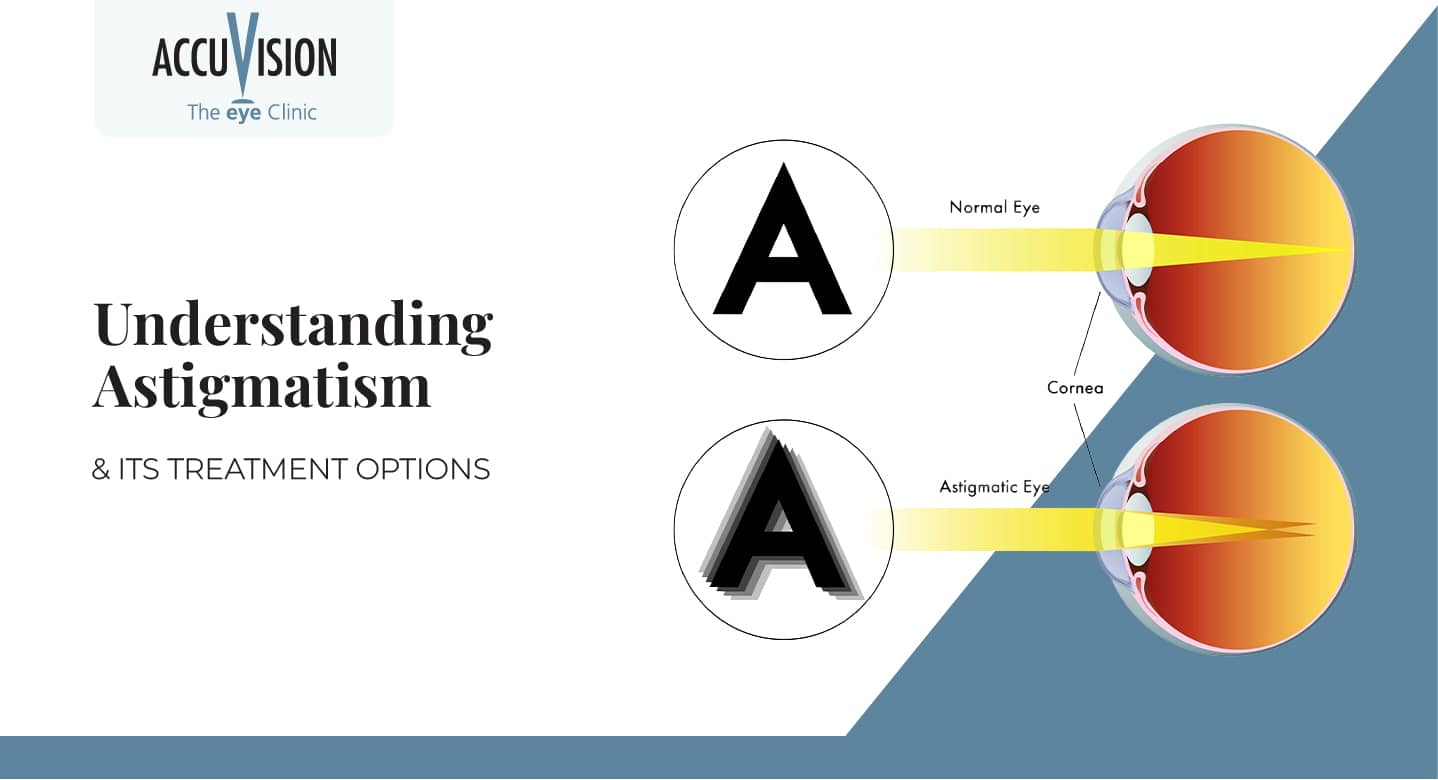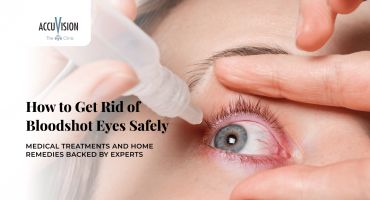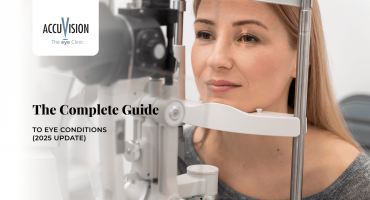- What is Astigmatism?
- Why Screening for Keratoconus Matters
- Non-Surgical Astigmatism Treatment Options
- Surgical Astigmatism Treatment Options
- Choosing the Right Option: Factors to Consider
- Conclusion
- FAQs
- References
Understanding Astigmatism and Its Treatment Options

Astigmatism is a common refractive error caused by an irregular curvature of the cornea or lens, preventing light from focusing correctly on the retina. According to the UK Biobank study, which examined over 83,000 adults aged 40 to 69, approximately 69% had measurable corneal astigmatism (≥0.5 dioptres, the unit used to measure the strength of glasses prescriptions) and 29% had higher levels (≥1.0 dioptres). This makes astigmatism one of the most common vision conditions in the UK & Europe. The encouraging news is that numerous effective astigmatism treatment options are available today, ranging from simple corrective lenses to advanced surgical procedures.
Understanding how to correct astigmatism enables patients to make informed decisions about their vision care and achieve optimal visual outcomes.
What is Astigmatism?
Astigmatism is a type of refractive error that develops when the cornea or eye’s natural lens is curved irregularly, shaped more like a rugby ball rather than a smooth, round sphere. This irregular surface prevents light rays from converging at a single focal point on the retina, resulting in blurred or distorted vision at all distances.
Common symptoms include persistent blurry vision, frequent headaches, eye strain, particularly during close work, squinting, and difficulty with night vision or seeing fine details. Many patients also experience fatigue after prolonged visual tasks and may notice that straight lines appear wavy or distorted
Astigmatism often occurs alongside myopia (short-sightedness) or hyperopia (long-sightedness) and can be classified into two main types:
- Corneal astigmatism: The most common form, occurring when the cornea has an irregular shape. Instead of being round-shaped like a basketball, the cornea is more football-shaped, which makes light focus at different points in the eye rather than one sharp spot, leading to blurred or distorted vision
- Lenticular astigmatism: A less common type that happens when the lens inside the eye has an irregular shape. It can be influenced by conditions such as diabetes, where blood sugar changes may alter the lens shape and affect vision.
Diagnosis requires a comprehensive eye examination, including visual acuity testing, refraction assessment, and corneal topography to map the precise shape and curvature of the cornea. Advanced diagnostic equipment helps determine the exact type and degree of astigmatism, enabling practitioners to recommend the most appropriate approach for how to correct astigmatism in each case
Why Screening for Keratoconus Matters
When patients show very high levels of astigmatism or their prescription changes quickly, it is important to check for corneal conditions such as keratoconus. A cross-sectional study found that among patients aged 15 to 40 with astigmatism greater than 2 dioptres, around 21% were diagnosed with keratoconus.
Keratoconus causes the cornea to thin and bulge into a cone shape, leading to progressive and irregular astigmatism that glasses cannot fully correct. If left undiagnosed, the condition may advance to stages where only complex or rigid lenses or corneal transplantation can restore vision.
Early detection is critical because treatments such as corneal cross-linking can stabilise the cornea and prevent worsening. Advanced diagnostic tools like corneal topography and OCT can reveal subtle changes that a standard eye test may miss. Screening is especially important for younger patients, those with a family history, or anyone experiencing frequent prescription changes
By identifying keratoconus early, eye care professionals can recommend the most effective treatment at the right time.
Non-Surgical Astigmatism Treatment Options
Several non-surgical approaches effectively correct astigmatism, each offering unique advantages depending on patient needs and lifestyle requirements.
- Glasses: These remain the most common first-line treatment, providing reliable vision correction through cylindrical lenses that compensate for the eye’s irregular curvature. Modern lens technologies offer excellent optical quality with anti-reflective coatings and lightweight materials for enhanced comfort.
- Toric contact lenses for astigmatism: Specially designed lenses created to correct the uneven curvature of the cornea. Unlike standard spherical lenses, toric contact lenses for astigmatism feature different powers in different angles of the lens and are weighted or designed to maintain proper orientation on the eye. These specialised lenses provide sharper vision than glasses in many cases, offer broader peripheral vision, and eliminate issues with fogging or rain spots. Available in daily, weekly, and monthly replacement options, they accommodate various lifestyles and preferences. However, toric lenses typically cost more than standard contacts and may require an adaptation period as the eye adjusts to the lens movement and stabilisation.
- Orthokeratology for astigmatism: This is commonly called Ortho-K, this treatment uses specially designed rigid gas-permeable contact lenses worn overnight to gently reshape the cornea for temporary vision correction. Studies demonstrate that orthokeratology for astigmatism can effectively correct both regular and irregular astigmatism patterns. The treatment offers several benefits, including non-surgical, reversible correction that provides clear daytime vision without lenses or glasses. It’s particularly suitable for active individuals, children with progressive myopia, and those unsuitable for surgical procedures. Modern toric orthokeratology designs can successfully treat moderate to high levels of astigmatism. However, the correction is temporary, requiring nightly lens wear, and not all prescriptions or corneal shapes are suitable for this treatment approach
Surgical Astigmatism Treatment Options
Surgical intervention offers permanent correction for astigmatism, with several proven techniques available depending on individual circumstances and eye health status.
- LASIK for astigmatism:
Uses advanced excimer laser technology to precisely reshape the corneal surface, correcting the irregular curvature responsible for vision problems. The procedure includes making a thin flap in the cornea, using a laser to reshape the underlying tissue, and then gently placing the flap back to heal naturally. LASIK for astigmatism can simultaneously correct accompanying myopia or hyperopia, providing comprehensive vision correction in a single procedure.
Suitability for LASIK for astigmatism depends on several factors, including adequate corneal thickness, stable prescription for at least twelve months, overall eye health, and realistic expectations about outcomes. The procedure offers excellent success rates with most patients achieving 20/20 vision or better, permanent correction that eliminates dependence on glasses or contacts, and rapid visual recovery typically within 24-48 hours. However, potential risks include temporary dry eyes, light sensitivity, and rare complications such as infection or irregular healing patterns. Specialized laser platforms can treat very high levels of astigmatism safely and effectively. - PRK and LASEK:
Serve as alternative laser procedures for patients unsuitable for LASIK, such as those with thin corneas or irregular corneal surfaces. These surface ablation techniques remove the epithelium before laser application, offering similar visual outcomes with slightly longer recovery periods. - Cataract surgery and astigmatism correction
This has transformed the treatment for patients with both cataracts and astigmatism. This approach utilises toric intraocular lenses (IOLs) during cataract removal, addressing both conditions simultaneously. Cataract surgery astigmatism correction has gained increasing adoption in UK cataract care as surgeons recognise the benefits of comprehensive vision rehabilitation. Modern toric IOLs feature advanced designs that maintain rotational stability and provide excellent long-term outcomes. The procedure offers permanent correction combined with cataract removal, eliminating the need for additional refractive surgery, and can significantly improve the quality of life for appropriate candidates.
Choosing the Right Option: Factors to Consider
Selecting the optimal astigmatism correction approach requires careful consideration of multiple factors tailored to individual circumstances and preferences.
The severity and type of astigmatism significantly influence treatment selection, with mild cases often successfully managed through glasses or standard contact lenses, while moderate to high astigmatism may benefit from specialised toric lenses or surgical intervention. Age and lifestyle considerations play crucial roles in decision-making; active individuals or athletes might prefer orthokeratology for astigmatism for daytime freedom from lenses. In contrast, professionals seeking permanent correction might choose LASIK for astigmatism.
Overall eye health and medical history determine candidacy for various treatments, particularly surgical procedures requiring stable refractions and healthy corneal structure. Long-term cost considerations vary significantly between options, with non-surgical approaches involving ongoing expenses for lens replacement and eye examinations. At the same time surgical treatments require a higher upfront investment but eliminate ongoing corrective lens costs.
The importance of personalised consultation with specialised Optometrists or Ophthalmologists cannot be overstated, as these practitioners conduct comprehensive examinations, discuss lifestyle requirements, explain risks and benefits, and recommend the most appropriate treatment approach based on individual circumstances and visual goals.
Conclusion
Astigmatism is a highly treatable condition with multiple safe and effective astigmatism treatment options available to suit diverse patient needs and lifestyles. From traditional spectacle correction to advanced surgical techniques, modern eye care offers comprehensive solutions for achieving clear, comfortable vision. The key to successful astigmatism management lies in understanding how to correct astigmatism through personalised treatment planning that considers individual circumstances, visual requirements, and long-term goals.
Whether choosing toric contact lenses for astigmatism, exploring orthokeratology for astigmatism, considering LASIK for astigmatism, or investigating cataract surgery astigmatism correction, patients can achieve excellent visual outcomes with appropriate professional guidance. Each treatment modality offers unique advantages, and the optimal choice depends on factors including severity of astigmatism, age, lifestyle, and personal preferences.
The most important step is booking a comprehensive eye examination with qualified eye care professionals who can assess your specific needs and recommend the best approach for your circumstances. With today’s advanced astigmatism treatment options, clear vision is an achievable goal for virtually all patients seeking to improve their quality of life through better sight.
FAQs
1. What causes astigmatism?
Astigmatism occurs when the cornea or lens has an irregular curvature, preventing light from focusing clearly on the retina. It can be hereditary, develop alongside myopia or hyperopia, or arise due to eye injuries or certain medical conditions.
2. How is astigmatism diagnosed?
An eye care professional diagnoses astigmatism through a comprehensive eye exam, including visual acuity tests, refraction assessment, and corneal mapping (topography) to measure the exact curvature and degree of irregularity.
3. Can astigmatism be corrected without surgery?
Yes. Glasses with cylindrical lenses, toric contact lenses, and orthokeratology (overnight corneal reshaping lenses) can effectively correct astigmatism, depending on its severity and the patient’s lifestyle.
4. Is LASIK suitable for all types of astigmatism?
LASIK is most effective for regular astigmatism and in patients with adequate corneal thickness and stable prescriptions. An eye specialist can determine suitability and discuss potential risks, recovery, and expected outcomes.
5. How long do the effects of astigmatism treatments last?
Surgical treatments like LASIK or PRK offer permanent correction, while non-surgical options, such as glasses, contact lenses, or orthokeratology, require ongoing use or nightly lens wear to maintain clear vision.
References
Pontikos, N., Chua, S., Foster, P.J., Tuft, S.J., Day, A.C. and UK Biobank Eye and Vision Consortium, 2019. Frequency and distribution of corneal astigmatism and keratometry features in adult life: Methodology and findings of the UK Biobank study. PLOS ONE, 14(9), e0218144. doi: 10.1371/journal.pone.0218144
Shakir, A. and Alwan, A., with Eghbali, F., Abolbashari, F., Fakhraie, G., Hashemi, H. and Khabazkhoob, M., 2015. Prevalence of keratoconus in patients with astigmatism more than two diopters. International Journal of Medical Investigation, 4(3), pp.454–460. Available at: https://intjmi.com/article-1-395-en.html
Chen, C.C., Cheung, S.W. and Cho, P., 2012. Toric orthokeratology for highly astigmatic children. Optometry and Vision Science, 89(6), pp.849–855. https://doi.org/10.1097/OPX.0b013e318257c20f








